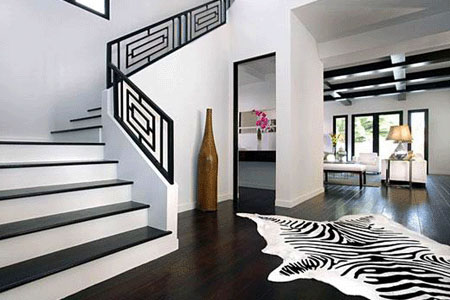
Home staging with rugs is a fast and super simple fix for many flooring issues. It is also a nice enhancement to the general décor of the space. Rugs can be placed over virtually any type of floor, from tile to slate to hardwood to laminate, and even over carpeting in some instances. High-end rugs can be very expensive, but many cheap alternatives can be purchased for very little money in off-priced home stores. The best part about rug staging is that you can take the investment with you to any new home after your present house is sold.
This essay provides an overview of using rugs as part of an effective home staging design layout.
Home Staging with Throw Rugs
Throw rugs range from quite small to really huge. The larger the size, the more expensive the materials and the higher quality the construction, the greater the cost of the rug.
Authentic Oriental rugs can go for tens of thousands of dollars and should only be used to stage extremely luxurious properties. However, there is no need to spend a lot of cash to make your home look like a million bucks: Beautiful and finely-made throw rugs and room-sized rugs can be purchased from many stores for under $100.
Rugs come in every style from contemporary to modern to traditional to Asian. They can be found in synthetic, organic and all-natural materials and can be made from fabric, woven materials or even wood or bamboo.
Strategies for Home Staging with Carpets and Rugs
Here are some expert recommendations for how to utilize rugs as part of your home staging design:
Rugs should not generally be floated in a fully furnished room. This means placing the rug in the middle of the floor without any furniture on it. Instead, situate rugs under groupings of furniture to coordinate and contrast the items against the existing décor in the room. Floating a rug in an open space, such as a foyer, is acceptable and beautiful in many instances.
Rugs should match the style and finish of the room. Placing a traditional rug in a contemporary room will provide a confusing and disjointed look and feel.
Be careful not to cause trip-and-fall hazards by putting thick rugs in high traffic flow locations. You want to sell the home, not end up in civil court with a substantial lawsuit against you.
Laying a rug on top of carpet is usually a bad idea. However, it can be done to cover small issues, such as stains and tears, as long as furniture is placed on top of the rug. This is the very definition of a cheap fix.
Rugs will warm up tile, slate and wood floors, imparting softness and texture to any visually-cold surface.
A final absolute rule: Never place rugs in front of the toilet in the bathroom.
Home Staging with Rugs Tutorial
I love rugs in almost any décor and have many in my own home. I am lucky enough to have the original 85 year old oak floors in my English Tudor and have created an updated look by adding contemporary rugs under all my furniture groupings, including the seating area in the living room and under the dining room set. These rugs really help to blend the old home with the new décor for a balanced look.
Remember, when placing a rug under a seating area, some of the legs of all furniture items should be on the rug. Do not simply place the rug in front of the couch.
I love to shop stores like IKEA and Walmart for rugs, where 5×7 and 5×8 sizes in exquisite patterns can be found for as little as $30.
To learn more about using rugs in your home staging projects, contact a professional home stager or read up on sweat equity staging in some books and magazine articles today.




